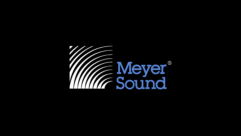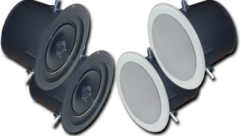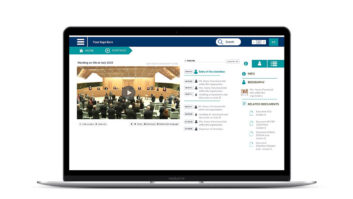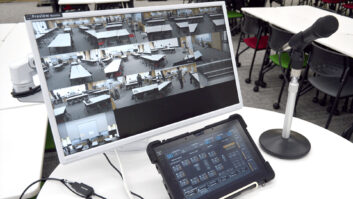This summer at Prospect Park in Brooklyn, N.Y, the Metropolitan Opera delivered an outdoor concert to a 50,000-strong crowd with an impressive Meyer Sound system. Organized by America’s largest classical music organization, the mammoth spectacular was headlined by operatic superstars Angela Gheorghiu and Roberto Alagna, who were accompanied by the Metropolitan Opera Orchestra and Chorus under the baton of Ion Marin. The repertoire of arias and choruses by Verdi, Donizetti, Bizet and Puccini was performed for the audience over a nearly half-mile-long grassy expanse of the park.
The Meyer Sound system at the event was based on a design that has been used for years in outdoor events for both the Met and the New York Philharmonic. Only this time the system was “super-sized,”? with the main stage system anchored by M3D line array loudspeakers, augmented by 14 40-foot delay towers carrying a total of 148 powerful MILOA® line array loudspeakers.
“This was easily the largest concert I’ve ever done,”? states PJ Volpe, head of sound for the Metropolitan Opera and the event’s FOH mixer. “But the result was absolutely wonderful. It was the best show in my mixing career.”?
Domonic Sack, executive vice president of New York-based Sound Associates, presided over the intensive logistical effort, while the company’s Bob Hanlon engineered the system expansion with assistance from Josh Marks. Equipment came largely from Sound Associates’ own inventory, supplemented by the MILO loudspeakers owned by Taylor, Mich.-based Thunder Audio and Hampstead, N.H.-based Rainbow Productions.
The two primary challenges for the Sound Associates team were ensuring a seamless transition from the main stage to the delays, and providing uniform coverage throughout the vast expanse with no gaps and minimal overlap. Meyer Sound’s Galileoâ„¢ loudspeaker management system, with six Galileo 616 processors, proved to be instrumental in meeting these goals.
“The Galileos made this huge system manageable,”? maintains Sack. “For example, you could group all of the delay towers in a ring and adjust them all together. You could identify what you were doing immediately, without fear that you might be making a mistake. That’s a great feeling.”?
Another favorite of the group was the M3D line array. “The M3Ds were spectacular,”? comments Hanlon. “The cardioid pattern allowed the orchestra to play without any worries about back-lobing from the arrays. And when I walked through the front section, the response was very smooth, very consistent.”?
Volpe agrees: “I wouldn’t use any other loudspeakers for these events. The low-mid response is spectacular, with plenty of control; and the high frequencies are smooth and open, perfect for classical music.”?
At the stage, the main left-right arrays of ten M3D loudspeakers each were supplemented by 24 MICAâ„¢ line array loudspeakers. Other Meyer Sound cabinets—including CQ-1, UPA-1P and UPA-2P loudspeakers, and UPJ-1P VariOâ„¢ loudspeakers – were employed for center fill, side fill and orchestra foldback. Eight 700-HP subwoofers provided low end, and the two soloists were each supported by a UPM-1P stage monitor.
The 14 delay towers were deployed in four rings: the three innermost rings each had three towers with ten MILO loudspeakers, while four towers in the fourth outer ring flew 12 MILO cabinets each. A total of 18 M3D-Sub and 700-HP subwoofers were used in the delay field. Six video screens were placed among the towers, with the video signal delayed to sync with the audio.
Meyer Sound’s MAPP Online Proâ„¢ acoustical prediction program was used extensively throughout the design process, with even coverage achieved in a collaborative process involving the Met’s sound department, Sound Associates, and Meyer Sound technical support. A SIMA®3 audio analyzer was used for final system tuning.
At front of house, Volpe mixed the concert on a Midas XL8 digital console, aided by console tech Wally Flores. Orchestra and soloist microphones were by Schoeps and Neumann. Monitors were mixed on a Yamaha DM-2000.
According to Sack, the event brought together an ideal combination of technology and teamwork. “These large jobs need the right equipment,”? Sack notes, “but it’s also in the logistics, the planning and the people. This was a great team effort, and that’s why it was so successful.”?
During the concert, Hanlon had a chance to walk among the audience. “There were lots of families there, with plenty of enthusiasm and clapping all around. It was a great show for those who were new to opera. The reaction was spectacular, and there’s nothing more fulfilling. That’s why we do it, of course.”?
Images available by pasting this link into your browser:










